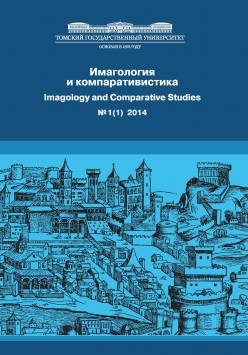The still angel. On the history of one of the constant motifs of Russian literature. Article Two. The Ineffable: from Zhukovsky to Turgenev
The Western Europe mythical image and the motif of the still angel, which the first article was about, perfectly met the reader expectations of the Russian well educated society of the first half of the 18th - early 19th centuries where the need in "soft", that is enlightened and humane, religiosity took an important place. The mentioned motif settled down in the Russian literature as well, especially in pre-romantic and romantic lyric poetry. Speaking about the immediate literary sources of the still angel motif, it is worthy of notice, that, when creating Lisa Kalitkina image, Turgenev kept the intertextual memory of another victim of an unhappy love affair - "poor Lisa", the heroine of Karamzin's novel with the same name. However, she can only be characterized as a distant ancestor of the inhabitant of the Home of the Gentry. It is Pushkin's Tatyana Larina who is much closer to her: a girl with a pure soul, silent, serious and faithful to her darling for all. Svetlana from Zhukovsky's ballad with the same name is even closer to Lisa Kalitkina: a girl who is not only "angelic", dreamy and silent, but also religious. In the lyric poetry of this poet, the motif of the still angel takes an important place, forming a bond with its German prototype; the Home of the Gentry is full of reminiscences from Zhukovsky's poetry. As for the real prototypes of Lisa Kalitkina, a secial role belongs to Zhukovsky's nieces, the Protasov sisters, Mariya and Alexandra (their married names are Moyer and Voyeykova respectively). Alexandra, who was Svetlana's prototype, was justly called angelic during her lifetime for her gentle temper and virtue; I.I. Kozlov and N.M. Yazykov, who were in love with her, called her a still angel in their poems. At the same time, her character (at least before her marriage with A.A. Voyeykov) was mainly cheerful, not sad. Maria, who was Alexandra's sister and Zhukovsky's beloved, was different. The poet often compared her with a still angel, including the poem he wrote on the occasion of her unexpected death, "19th March, 1823". Her temper reminds the one of the main character of the Home of the Gentry most of all. The image of the still angel, by Turgenev, is a logical conclusion of the long way of Lavretsky who wandered through his life in the search of the great mystery of existence which consists in the inexpressible - beauty, love, "stillness" and call of duty. The inexpressible is one of the major categories of the romantic philosophy and aesthetics; it was worked out by W. Wackenroder, L. Tieck and F. Schelling. As well as Hesychastic silence, it goes back to Neo-Platonism which serves as the general source of Eastern and Western Christianity conceptions of the inexpressible highest values.
Keywords
тихий ангел, ангел-хранитель, мотив, топос, невыразимое, платонизм, романтизм, В.А. Жуковский, сестры Протасовы, И. С. Тургенев, still angel, guardian angel motif, topos, ineffable, Platonism, romanticism, V.A. Zhukovsky, I.S. TurgenevAuthors
| Name | Organization | |
| Shchukin Vasily G. | Jagiellonian University in Krakow (Krakow, Poland) | wszczukin@yandex.ru |
References

The still angel. On the history of one of the constant motifs of Russian literature. Article Two. The Ineffable: from Zhukovsky to Turgenev | Imagologiya i komparativistika – Imagology and Comparative Studies. 2014. № 2.